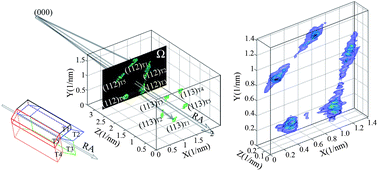Cyclic twinning and internal defects of boron-rich nanowires revealed by three-dimensional electron diffraction mapping†
Abstract
Structural characterization of individual nanosized boron-rich

* Corresponding authors
a
General Research Institute for Nonferrous Metals, Beijing 100088, PR China
E-mail:
fuxints@gmail.com
b
Department of Physics, University of York, York YO10 5DD, UK
E-mail:
jun.yuan@york.ac.uk
Structural characterization of individual nanosized boron-rich

 Please wait while we load your content...
Something went wrong. Try again?
Please wait while we load your content...
Something went wrong. Try again?
X. Fu and J. Yuan, Nanoscale, 2013, 5, 9067 DOI: 10.1039/C3NR01839C
This article is licensed under a Creative Commons Attribution 3.0 Unported Licence. You can use material from this article in other publications without requesting further permissions from the RSC, provided that the correct acknowledgement is given.
Read more about how to correctly acknowledge RSC content.
 Fetching data from CrossRef.
Fetching data from CrossRef.
This may take some time to load.
Loading related content
